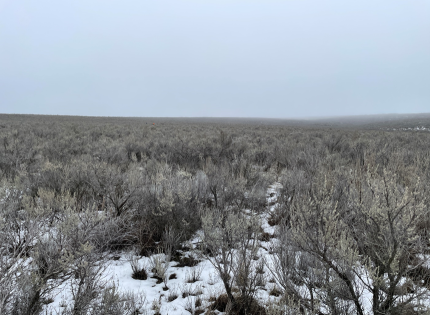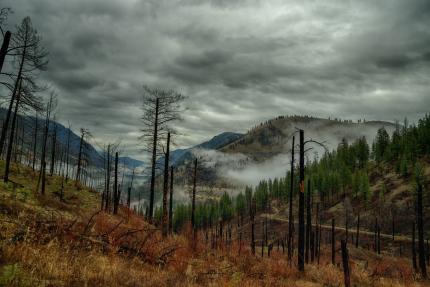Managing Wildlife Populations
Trapped, Sick and Injured Wildlife: Biologists in District 5 have been receiving several phone calls regarding deer that have been stuck in the east-low canal. Biologists have teamed up with the Adams County Irrigation District Office in setting out deer escape ramps in areas where it is most common for deer to be found trapped. Along with the escape ramps, there are a couple of maintenance ramps that are located throughout the canal for irrigation district employees to get equipment into the canal that deer are also able to easily access should they walk along the canal far enough to find it.
Northern Leopard Frogs: Biologists Nason, Dougherty, and Clements are continuing to plan the 2024 northern leopard frog field season. They have also worked with the broader northern leopard frog team to identify priority actions for conservation, including DNA analysis of frogs surveyed in the 2023 season and dedicated bullfrog management.

Pygmy Rabbits: District 5 staff members, including Biologists Nason and Dougherty, have continued to support the pygmy rabbit team with their winter burrow survey efforts. Despite challenges with staff member turnover and melting snow, the team has successfully completed survey transects, identified active burrows, and collected samples for DNA analysis.
Pygmy Rabbit Survey: Biologists Cook and Morris assisted the pygmy rabbit recovery team with winter surveys looking for active burrows and collecting fecal pellets for DNA sampling. Snow helps with surveys, but the day grew wetter as the warmer temperatures continued to melt the snow. Surveys include walking in a zig-zag pattern through pygmy rabbit habitat and looking for signs of use such as trails, tracks, scat, and burrows. These surveys help determine occupancy and numbers of rabbits in both known and potential pygmy rabbit habitat.
Waterfowl: Biologist Clements spent a handful of days in January organizing a volunteer project reconstructing hen mallard nesting tubes with the Washington Waterfowl Association (WWA), Moses Lake chapter. Clements went out with a Washington Conservation Corps (WCC) crew to collect over 20 nest tubes to disassemble and reassemble with new straw and orchard grass.
With the help of four WWA members plus the WCC crew membrs, they were able to accomplish reassembling 30 tubes. The next day, the WCC crew members and Biologist Clements went out to redeploy the tubes to their appropriate stands. The district team will follow up in the spring to see if the nesting tubes are being utilized by any mallard hens and if any clutches are successful.
Along with the mallard nest tubes, Biologist Clements has been reaching out and connecting with several dark goose hunters that have harvested geese with GPS collars on them. The hunters have been providing extremely helpful information in regards to their harvest as well as being fairly quick to exchange the real GPS collars for replicas that have been provided to WDFW staff members from Alaska Department of Fish and Game. With the exchange of collars and information on the harvest, Alaska Department of Fish and Game biologists are sending hunters certificates and maps of the movements associated with the collars. Clements has collected over ten collars that have been harvested in in the Columbia Basin this season.




Providing Recreation Opportunities
Hunter Access: Biologist Morris checked fields enrolled in our Waterfowl Habitat and Access Program. Some hunters had success harvesting both waterfowl and upland birds on these sites. Biologist Morris also worked with landowners to start updating two hunter access contracts that expired this year (one Hunt by Written Permission and one Feel Free to Hunt).

Conserving Natural Landscapes
Habitat Plots: Biologist Cook created an initial habitat improvement plan that would help deal with invasive common reed and Russian olive trees in a wet circle corner. The landowner was excited by the prospects of habitat improvement and Cook shared the plan. If the landowner approves the project and potential permitting is approved, field work can begin this spring.
Biologist Morris checked an established habitat plot to see if there was evidence of wildlife use during the winter. He saw upland game bird and mule deer signs in the area. This habitat plot provides valuable cover and forage for game and non-game species throughout the year.

Other
Specialist Heilhecker had a busy couple of weeks. She took her vehicle in for service and submitted her fingerprints to Washington State Patrol for her period review. Then she boarded a flight for the annual wolf population survey.
Wildlife Sightings: While out checking local conditions Biologist Morris spotted several great blue herons, swans, bald eagles, and other wildlife along Moses Lake.




